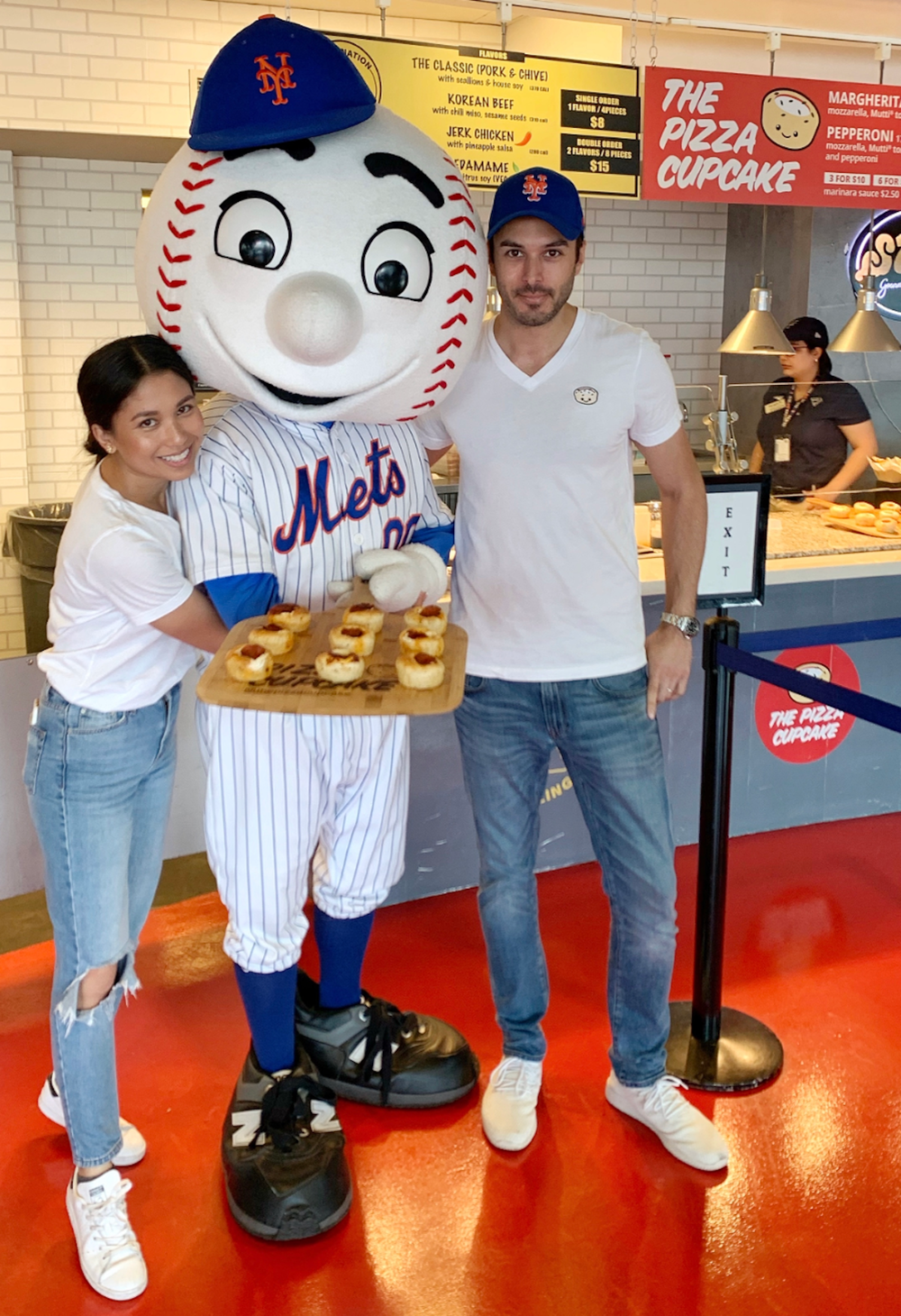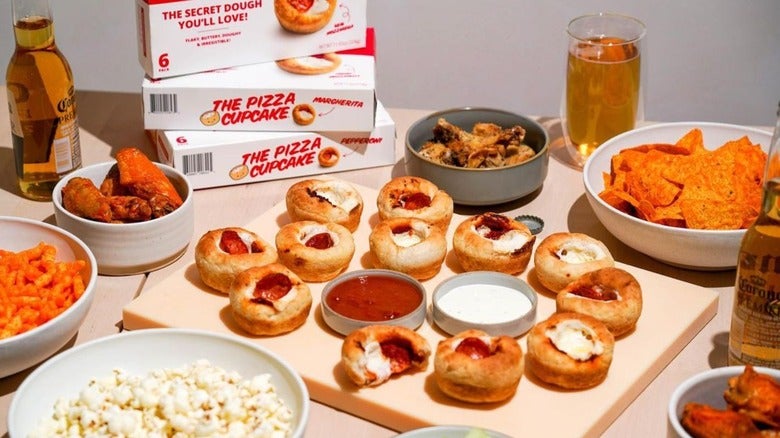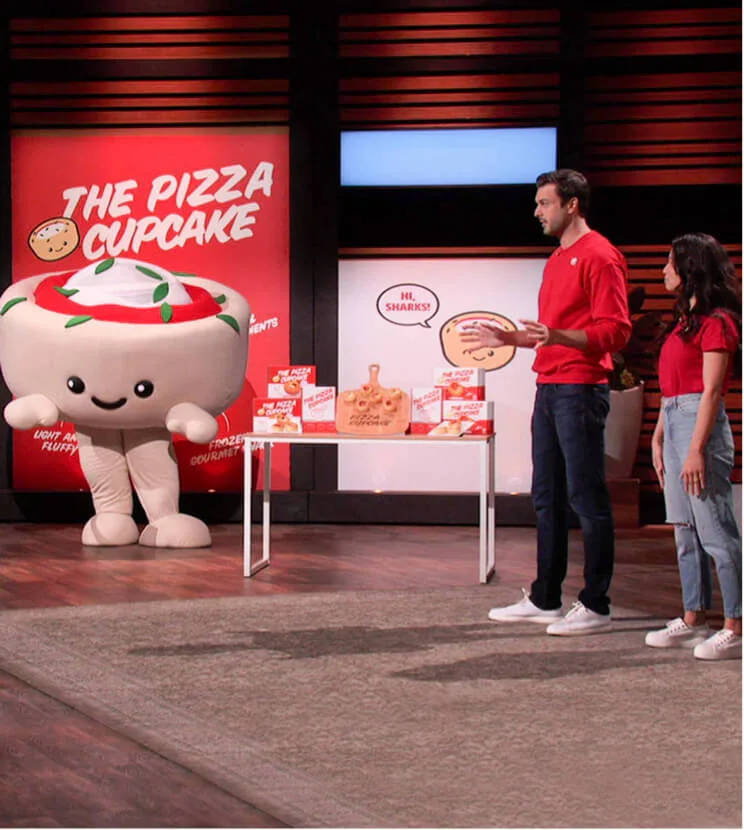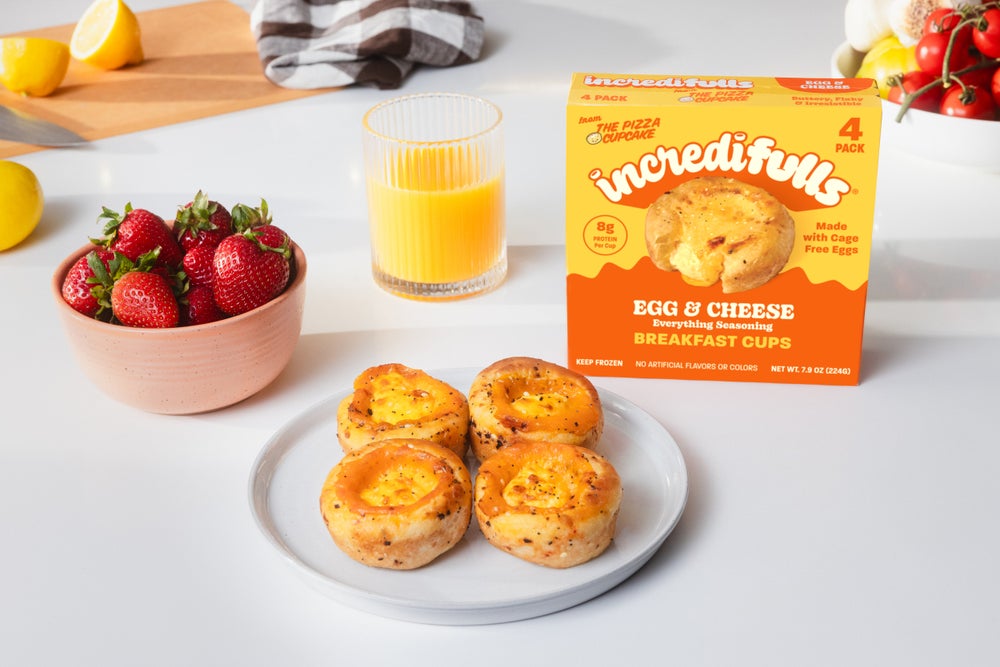This Couple's 'Scrappy' Side Hustle Sold Out in 1 Weekend — It Hit $1 Million in 3 Years and Now Makes Millions Annually: 'Lean But Powerful'

This Side Hustle Spotlight Q&A features Michelle Jimenez-Meggiato, 36, of Jersey City, New Jersey. Jimenez-Meggiato is a former entertainment marketing executive who left the corporate world to co-found The Pizza Cupcake, a frozen snack brand, with her husband, Andrea Meggiato, in 2018.

Image Credit: Courtesy of incredifulls
Learn how the couple's weekend side hustle landed a deal with Lori Greiner on Shark Tank and led to a lucrative CPG business that's evolved into their incredifulls brand; expanded into breakfast; landed in retailers nationwide, including Wegmans, Walmart and Target; and makes millions of dollars a year.
Responses have been edited for length and clarity.
Want to read more stories like this? Subscribe to Money Makers, our free newsletter packed with creative side hustle ideas and successful strategies. Sign up here.
What was your day job or primary occupation when you started your side hustle?When we started The Pizza Cupcake, I was already an entrepreneur, managing talent in beauty and entertainment and consulting for an early-stage tech startup. Launching this brand felt like the next chapter — building something from scratch with my husband and turning a shared passion into our family business.
When did you start your side hustle, and where did you find the inspiration for it?We launched The Pizza Cupcake in November 2018 at Smorgasburg, a weekend food market in Brooklyn. The idea started in our kitchen, inspired by Andrea's favorite childhood snack of individually sized pizzettas he grew up eating in Venice, Italy, which was a big contrast to the frozen pizza bites I grew up eating in the U.S. On one of our first dates, he taught me how to make these small pizzas, and that love for pizza quickly became part of our story. We started making pizza cupcakes as our go-to dish to bring to friends and family during the holidays or get-togethers. That first weekend at Smorgasburg, we sold out, and that's when we knew we had something special.

Image Credit: Courtesy of incredifulls
What were some of the first steps you took to get your side hustle off the ground? How much money/investment did it take to launch?We started scrappy, investing $20,000 of our savings, renting a commercial kitchen in Long Island City and cash-flowing the business one pop-up and catering event at a time. As we began to grow, I applied and was accepted into Pipeline 1863, an accelerator program through 1863 Ventures and Georgetown University. Through the program, we received a $15,000 non-dilutive investment that we used to purchase our first manufacturing pans and run our initial line trial with a co-manufacturer. The program also connected us to M&T Bank, where we secured an SBA loan that gave us the working capital to invest in ingredients, production and scaling our operations.
Are there any free or paid resources that have been especially helpful for you in starting and running this business?The commercial kitchen, Entrepreneur Space, in Long Island City, supported by the Queens Economic Development Corporation, was an incredibly helpful resource. Not having to take on a lease gave us the flexibility to learn, test and grow at our own pace. The 1863 Ventures accelerator was also a valuable early support system. Beyond the $15,000 investment, the program provided a $5,000 legal credit with a partner firm to help with our corporate documents and legal structure, along with practical advice from experienced mentors that guided our early decisions.
If you could go back in your business journey and change one process or approach, what would it be, and how do you wish you'd done it differently?If I could go back, I would focus on getting the right help and systems in place sooner. In the beginning, it's tempting to do everything yourself to save money, but bringing in part-time support and interns can free you up to focus on the work that drives the business forward. Even small improvements in how you operate make scaling much smoother and save tremendous time and energy down the road.
When it comes to this specific business, what is something you've found particularly challenging and/or surprising that people who get into this type of work should be prepared for, but likely aren't?Retail takes focus, commitment and capital. Getting on the shelf is just the beginning because the real work comes after in driving sales, supporting your retail partners and making sure you can deliver on every commitment. One of the biggest lessons we've learned is that it's okay to say no to distribution that doesn't align with your brand or what you're truly ready to support.
Can you recall a specific instance when something went very wrong? How did you fix it?When we pivoted to DTC in 2020, we onboarded our first 3PL partner. Shortly after they began shipping, some orders were delivered to customers thawed. While we were away filming Shark Tank, they sent us a three-year exclusivity contract and threatened to stop shipping if we didn't sign. It was just my husband and me running the business, and we had to act fast to protect our customers. We refused to sign, immediately stopped using that facility and fulfilled orders ourselves from our commercial kitchen until we secured a new fulfillment partner. My best friend Diana even jumped in to help get orders out when we were out of town filming. It was intense, but it taught me three key lessons: Always have contracts in place before engaging a partner, never rely on just one partner, so you always have a backup plan and, most importantly, protect your customer experience first.

Image Credit: Courtesy of incredifulls
How long did it take you to see consistent monthly revenue? How much did the side hustle earn?It took about three months after launching to see consistent monthly revenue, but Covid-19 shut down all of our original revenue streams overnight. We went from outdoor markets, corporate catering and stadiums to zero almost immediately and had to pivot to ecommerce. In 2021, our Shark Tank episode aired, and we hit $1 million in revenue. That moment proved there was real demand for The Pizza Cupcake and gave us the confidence to lean into retail.
What does growth and revenue look like now?We've grown from a weekend food market to being on shelves at national retailers and expanding into food service. Today, the business generates millions in annual revenue, supported by a lean but powerful team. We've also evolved The Pizza Cupcake into our new brand, incredifulls, and recently launched our newest innovation, Breakfast Cups, at Target. Our focus now is on continuing to grow the brand with new product extensions that bring the same joy, convenience and delicious taste to families everywhere.
What do you enjoy most about running this business?I still get emotional when someone tells me, "My daughter is a picky eater, but she loves the Pizza Cupcake," or when a customer shares that it was the hit of their party. But what means the most now is seeing my own 3-year-old light up when he eats it. He'll say, "So yummy, Mama," and even asks for Pizza Cupcake in his school lunch. Moments like that remind me why we started this: to create something that feels special, tastes fresh, uses better ingredients and eases a mom's guilt of not cooking a meal from scratch. The Pizza Cupcake has been part of every special occasion and gathering in our own lives, and now it's becoming that for other families, too. What I enjoy most is sharing that joy and creating those meaningful moments around our products.

Image Credit: Courtesy of incredifulls
What is your best piece of specific, actionable business advice? Don't wait for perfect. Start small, get your product in front of real people and treat every step as a chance to test, learn and improve. Feedback is everything, and you'll never have all the answers right away, but listening to your customers is how you get better.
Another lesson we learned early on was the power of focus. It's tempting to do everything at once, but narrowing in on our top two SKUs, margherita and pepperoni, gave us the traction we needed to grow. Once you've earned credibility and built the right infrastructure, then you can expand. In the beginning, less really is more.
Also, I can't stress this enough, but who you build with is everything.
entrepreneur





